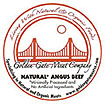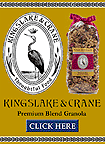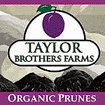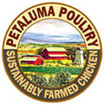|
Greek Wines Making a Comeback
By Katy Anderson
When
I told a couple of winemaker and sommelier
friends I was attending a Greek wine tasting,
a smug look bounced from face to face across
the room.
"Watch
out for the retsina, girl," my friend
A.J. said, voicing what I'm sure everyone
in the room was thinking. He was referring
to the bain of Greek wine's reputation;
thick, sweet, funky retsina, a concoction
widely considered vile by anyone who's encountered
it (I mean no offense to those who truly
love retsina, but I've never actually met
any of you).
This
was the issue being addressed by a panel
of Master Sommelier as well as a slew of
Greek winemakers, vineyard owners, restaurant
workers and wine writers: Greek wine has
a reputation to fix. Wine has been made
in Greece since ancient times, but now,
good wine is being made in Greece, and no
one has been taking notice until now.
A big step in Greek wine's publicity was
this tour I attended at the Westin St. Francis
in San Francisco on the 23rd of April. The
crew had stopped in New York before landing
here on the West Coast, and according to
George Athanas, one of the major organizers,
the seminars were very well received.
The
Greek Wine Association (www.thewinesofgreece.com)
stressed throughout the entire tasting that
a plethora of good wine is being produced
in the world today-largely thanks to the
ease of communication and transportation
making experience, technique and technology
global.
Getting
to know Greece's regions and studying what
makes them complex and individual is what
will make them flourish, especially in the
case of the Xinomavro grape and the Naoussas
area, according to Master of Wine Konstantinus
Lazarakis.
The
wines I tasted were far from boring and
even further from the retsina phenomenon.
It's
a given that, as in all of Greece's wine
regions, 342 varietals will only yield a
handful of noteworthy wines. I tasted a
good sample of these from Greece, and its
surrounding areas.
The
most noteworthy of the whites were a 2006
Aegean Islands Athiri made by Emery Villare,
(crispy, light minerals, smelled kind of
like a pine tree), an Assyrtiko from Santorini
called Sigalas Santorini 2006 that was potent
and minerally enough to account for its
birth in windswept nests on the heights
of a dormant volcano and my favorite white,
the intriguing and tropically-nosed Malgousia.
It smelled like papayas, jasmine and green
bamboo, making me want to drink it on the
beach in Thailand while eating a chicken
satay and curling my toes into the butter-warm
sand. It was a regional wine of Epanomi
and Macedonia named Gerovassiliou Malagousia,
retailing for only $20.
|
Master
Sommelier Brian Cronin |
Master
Sommelier Brian Cronin said he laughed as
he tasted some of the whites set before
the panel.
"These
wines kept reminding us of different whites----one
was like a Puligny Montrachet, then a Gruner
Veltliner, then a dry Reisling."
In
fact, Cronin said when he, Athanas, Master
Sommelier Gilles de Chambure and Master
Sommelier Keith Goldston toured Greece tasting
wines in September of 2006, he tasted an
early 90's Assyrtiko from Sigalas that he
believed was truly world-class.
The
reds were also quite impressive. Although
Greece's extensive temperature range can
imprint a marked acidity on the grapes,
I found several of the finished product
to be well integrated and surprisingly balanced.
The
Agiorgitiko grape, also known as St. George
(it's Greek translation) from Pelopenesse,
home of the best-known wine appellation,
Nemea, yields dry, deeply cherry red. It's
extremely tannic, cedary wine that reminded
me of chewing wood chips---but, hey, I'm
sure some of that dissipates with age. They
say that flavor was partially the result
of the ferrous red clay ribboned with limestone
that the grapes were grown in.
Greece's
pride and joy at the moment is the Xinomavro
grape. The name itself means "black
acid", denoting the sourness that,
in Xinomavro's case, can be quite charming.
Called
the "Pinot Noir" of Greece, Xinomavro
is treated by some winemakers as the Pinot
grapes are fermented in Burgundy: by cold
maceration.
The first Xinomavro I tasted, an Alpha Estate
from 2004 Florina/Macedonia, tasted as if
the wine itself had, like a baby lamb destined
for a Greek Easter dinner, fed upon wild
herbs-oregano, thyme, wild grasses.
The next was lighter, the herbal note had
digressed into sort of a redwood frond scent
and the color had willowed back to a candied
cherry. I was still intrigued.
The
third, Tsantali Rapsani Reserve 2001, definitely
reminded me a Bordeaux, despite the fact
that none of the grapes have even been heard
of by most average wine consumers.
Xinomavro,
Krassato and Stavrato grown together at
high altitudes next to Mount Olympus, are
co-fermented like most Bordeaux and create
a leathery wine with deep cherry and incense
notes. This wine also had the herbal oregano
note that made me salivate, and it, also,
retailed at only $20.
There
are 28 appellations in modern Greece for
wine, eight of which are reserved for sweet
wines, namely Muscats, Mavrodaphnes and
Malvasias.
The
Malvasia I tried, made by Douloufakis, was
a honey-colored 2005 made of all Malvasia
di Candia aromatica grapes. It was lovely,
and reminded me of a Sauternes. It wasn't
nearly as balanced, and was slightly thinner,
but still, it screamed for foie gras and
therefore naturally made my brain turn to
Sauternes.
I
didn't taste any Vin Santo there, but wanted
to. It's been produced, as many wines have
been, since ancient times. Nearby Italy
registered the name "Vin Santo"
but use it as an adjective to describe a
style of wine. For Greeks, however, it's
a regional wine description.
The
message is loud and clear: Greek wine is
back. Although many don't consider the high
heat and windy conditions ideal for growing
grapes, the North-facing slopes and high
altitudes have made it work. Updated vini/viticultural
techniques teamed with age-old grape varietals
have proven to be worthy of notice. And
for the price, admit it. These may be some
of the best value wines of today.
|

















